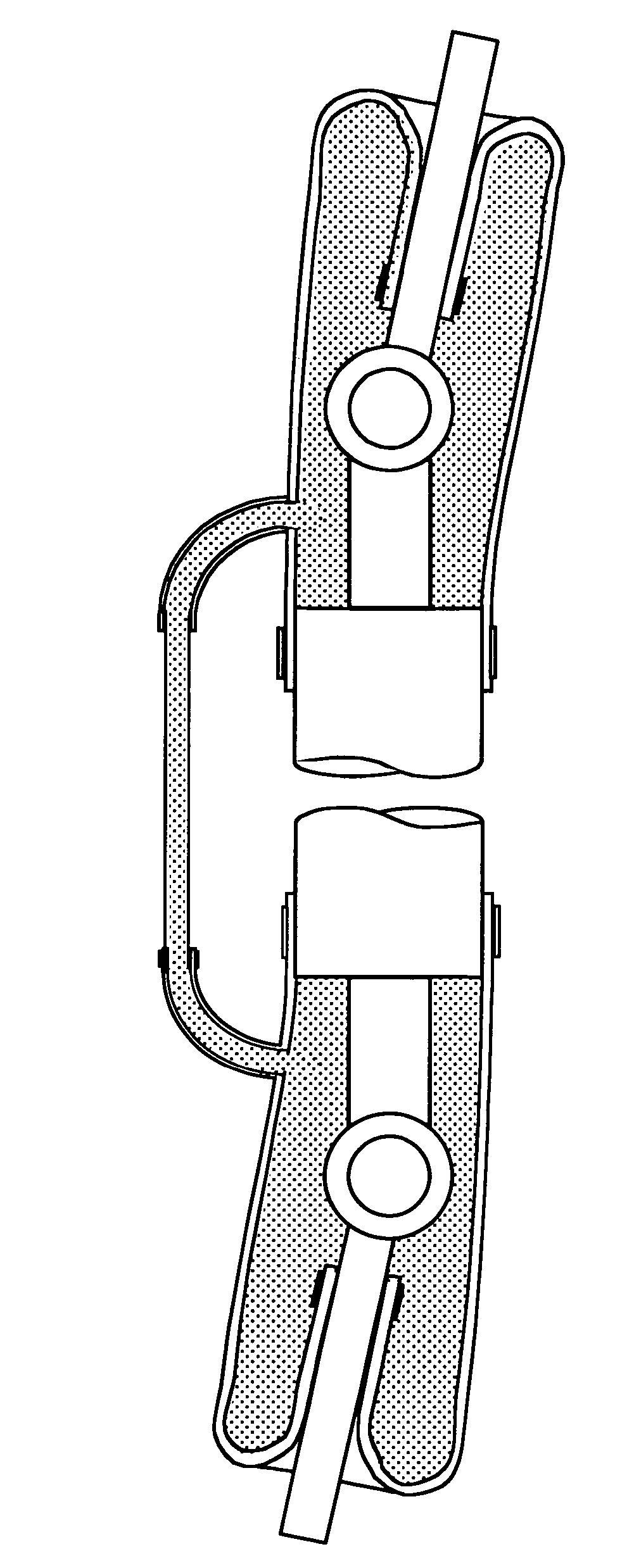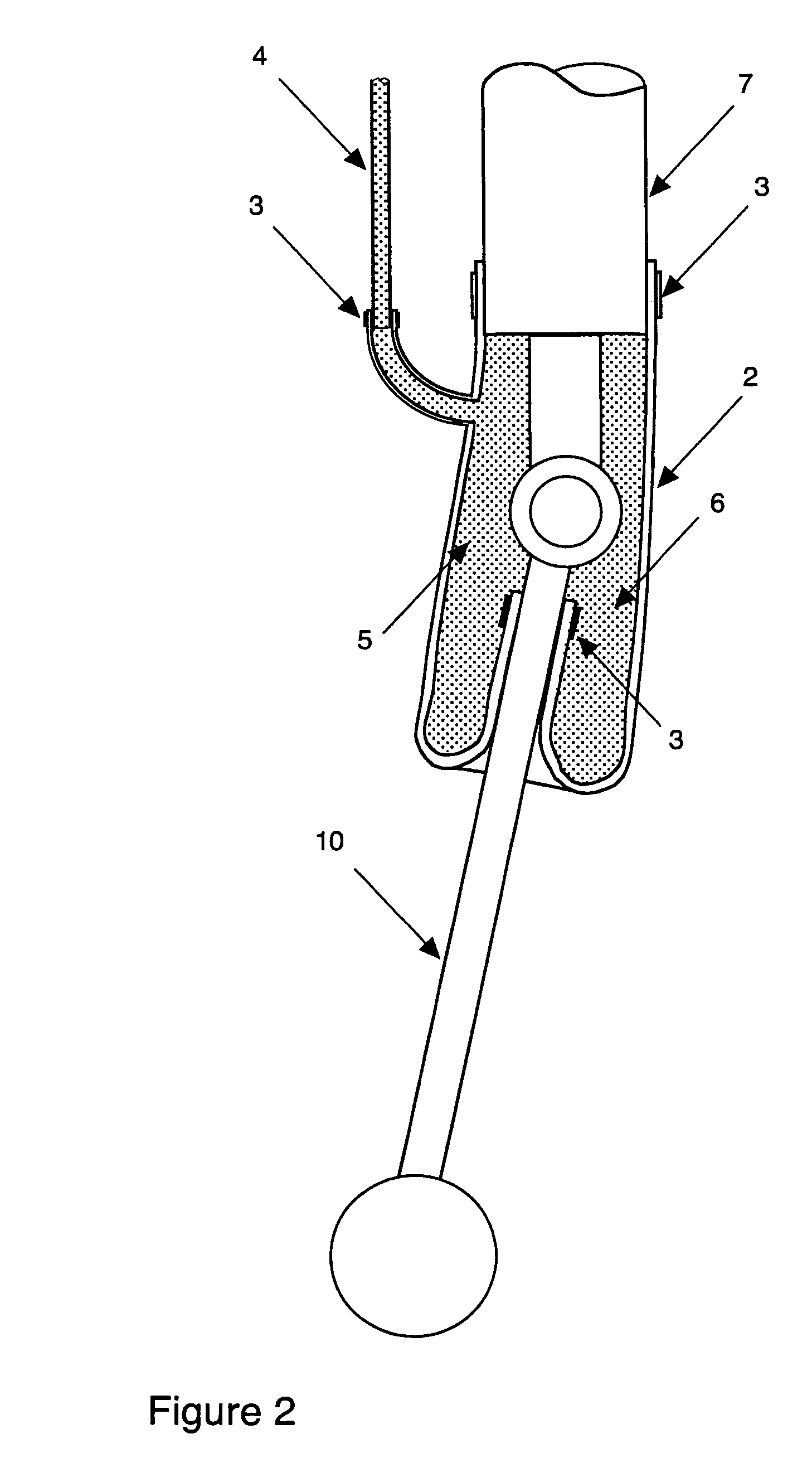Hydraulic damper integrated into steering rack for attenuating steering nibble
a damper and hydraulic technology, applied in the direction of springs/dampers, rigid suspensions, power driven steering, etc., can solve the problems of chassis mode energy dissipation, steering nibble is significant, steering oscillation, etc., to reduce the volume of the second working chamber, increase the volume of the working chamber, and reduce the volume of the chamber
- Summary
- Abstract
- Description
- Claims
- Application Information
AI Technical Summary
Benefits of technology
Problems solved by technology
Method used
Image
Examples
Embodiment Construction
[0031]A modified vehicle steering suspension arrangement is shown schematically in FIG. 1. This steering arrangement includes a hydraulically tuned steering damping system, which is comprised of two rolling boots 2 connected by an inertia track 4 and filled with working fluid 6. The hydraulically tuned steering damping system, and the new rolling boots 2 in particular, are shown in greater detail in FIG. 2.
[0032]The two rolling boots 2 replace the common dust boots found on steering gears, whose function was to prevent dirt from entering the steering gear 7. The inertia track 4 may replace the common air equalization tube found on steering gears, whose function is to prevent the air trapped with the dust boots from building up pressure.
[0033]The hydraulically tuned steering damping system works on some similar principles as existing hydromounts, however, it is designed to accommodate much greater displacements than hydromounts and does not add significant static stiffness to the sys...
PUM
 Login to View More
Login to View More Abstract
Description
Claims
Application Information
 Login to View More
Login to View More - R&D
- Intellectual Property
- Life Sciences
- Materials
- Tech Scout
- Unparalleled Data Quality
- Higher Quality Content
- 60% Fewer Hallucinations
Browse by: Latest US Patents, China's latest patents, Technical Efficacy Thesaurus, Application Domain, Technology Topic, Popular Technical Reports.
© 2025 PatSnap. All rights reserved.Legal|Privacy policy|Modern Slavery Act Transparency Statement|Sitemap|About US| Contact US: help@patsnap.com



